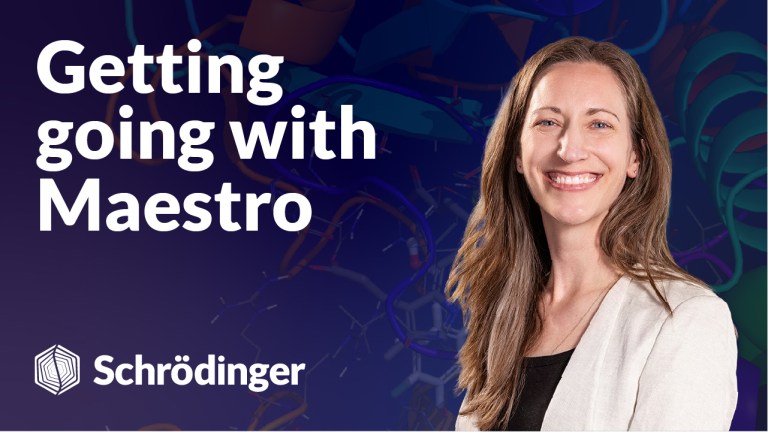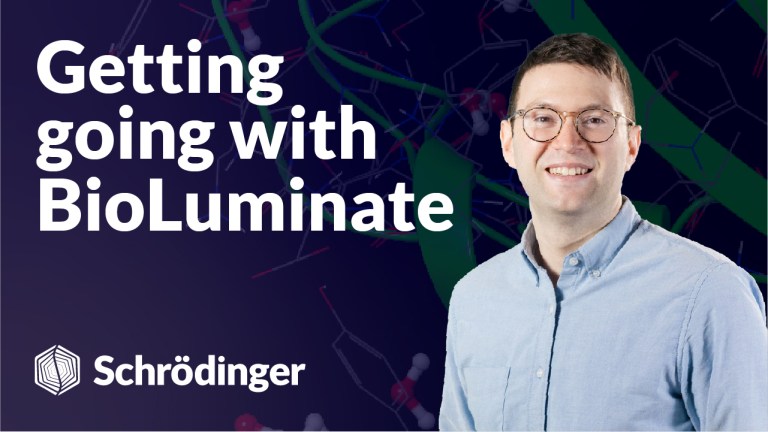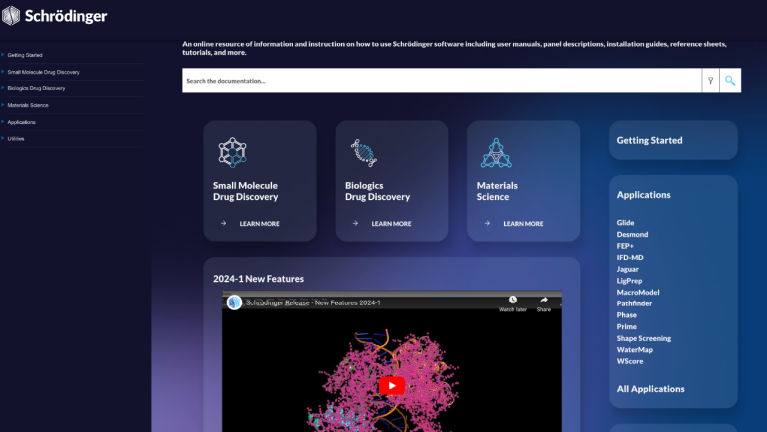Free learning resources
Quickly learn how to integrate Schrödinger technology into your research. From overviews to deep dives, you can find information about applications, workflows, and analysis here.
Quickly learn how to integrate Schrödinger technology into your research. From overviews to deep dives, you can find information about applications, workflows, and analysis here.
 Video
Life Science
Video
Life Science
 Video
Life Science
Video
Life Science
A free video series introducing the basics of using Maestro Bioluminate.
 Documentation
Life Science
Documentation
Life Science
Self-guided step-by-step introductions to various workflows with example files for getting comfortable with Schrödinger tools.
Short video overviews of specific introductory and scientific topics, including summaries of new release features.
A one-page PDF that visually describes the panel or workflow.
Prepare receptor grids for docking, dock molecules and examine the docked poses
Generate starting poses for FEP simulations for a series of BACE1 inhibitors using core constrained docking
Visualize, build, and evaluate antibody models, analyze an antibody for various characteristics, dock an antigen to an antibody.
Create a homology model of TYK2, including a bound ligand, using the structure of JAK3 as a starting point. Then you will compare this homology model with the crystal structure for TYK2 bound to 4GIH ligand.
Perform an FEP+ residue scan for identifying the impact of mutations on the stability and affinity of a protein-protein system.
Prepare, run, and perform simple analysis on an all-atom MD simulation with Desmond.
Prepare, run, and analyze a free energy perturbation (FEP) simulation for a series of BACE1 inhibitors using FEP+.
Prepare, run and analyze a protein Free Energy Pertubation (FEP) simulation to obtain thermostability predictions for single point mutations in the T4 Lysozyme
Examine results from WaterMap and WM/MM scoring to identify unstable waters and evaluate ligand binding.
Displace an unstable water an optimize a hit molecule with the Ligand Designer.
Use Consensus IFD-MD to generate a model that can be used to improve selecitvity between an on-target protein and hERG
Perform a Quick Shape screening on a library of 20000 compounds and analyze the results.
Level up your skill set with hands-on, online molecular modeling courses. These self-paced courses cover a range of scientific topics and include access to Schrödinger software and support.
Connect your students to industry-leading molecular modeling software through a web-based platform. Incorporate molecular modeling in the classroom.